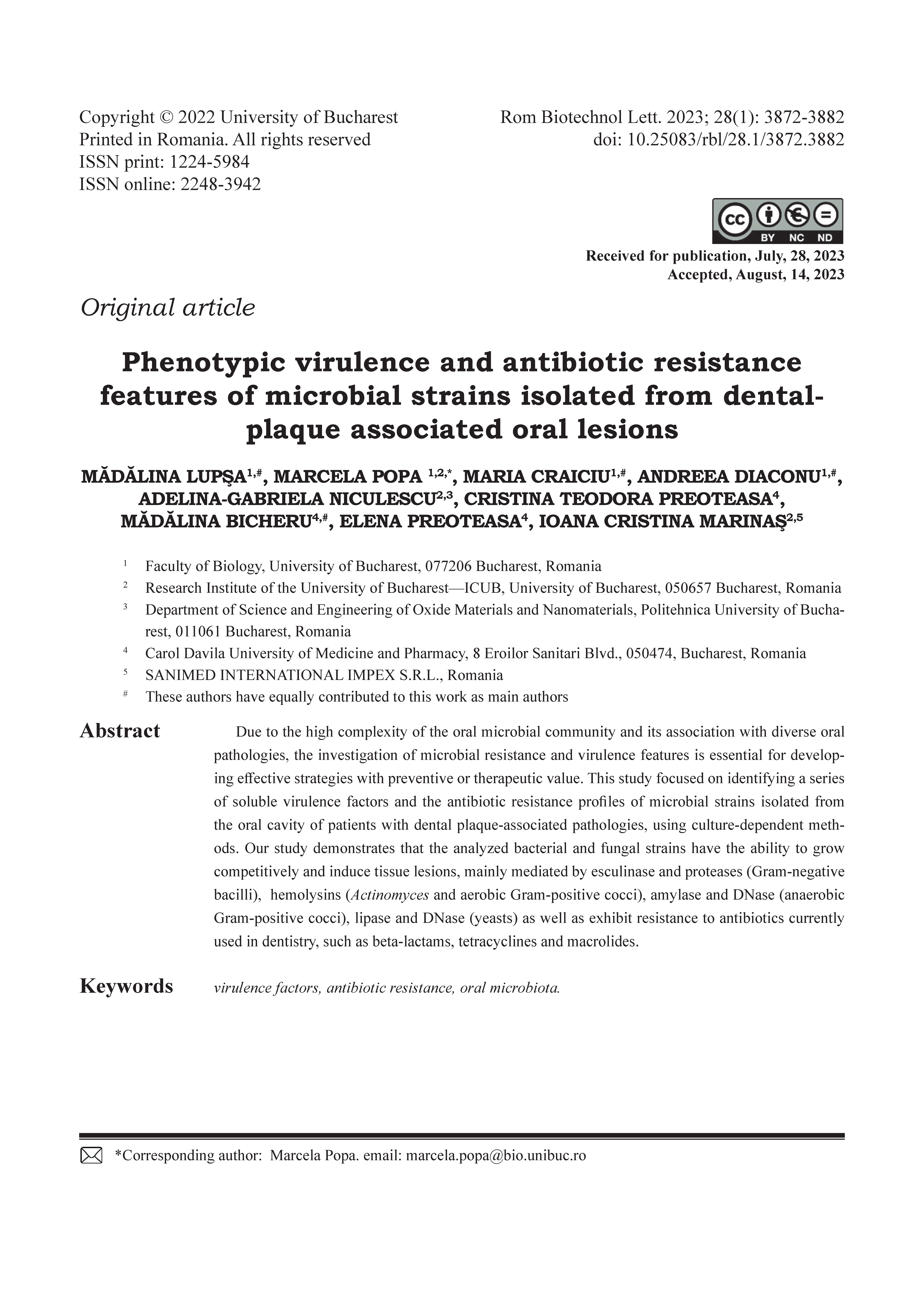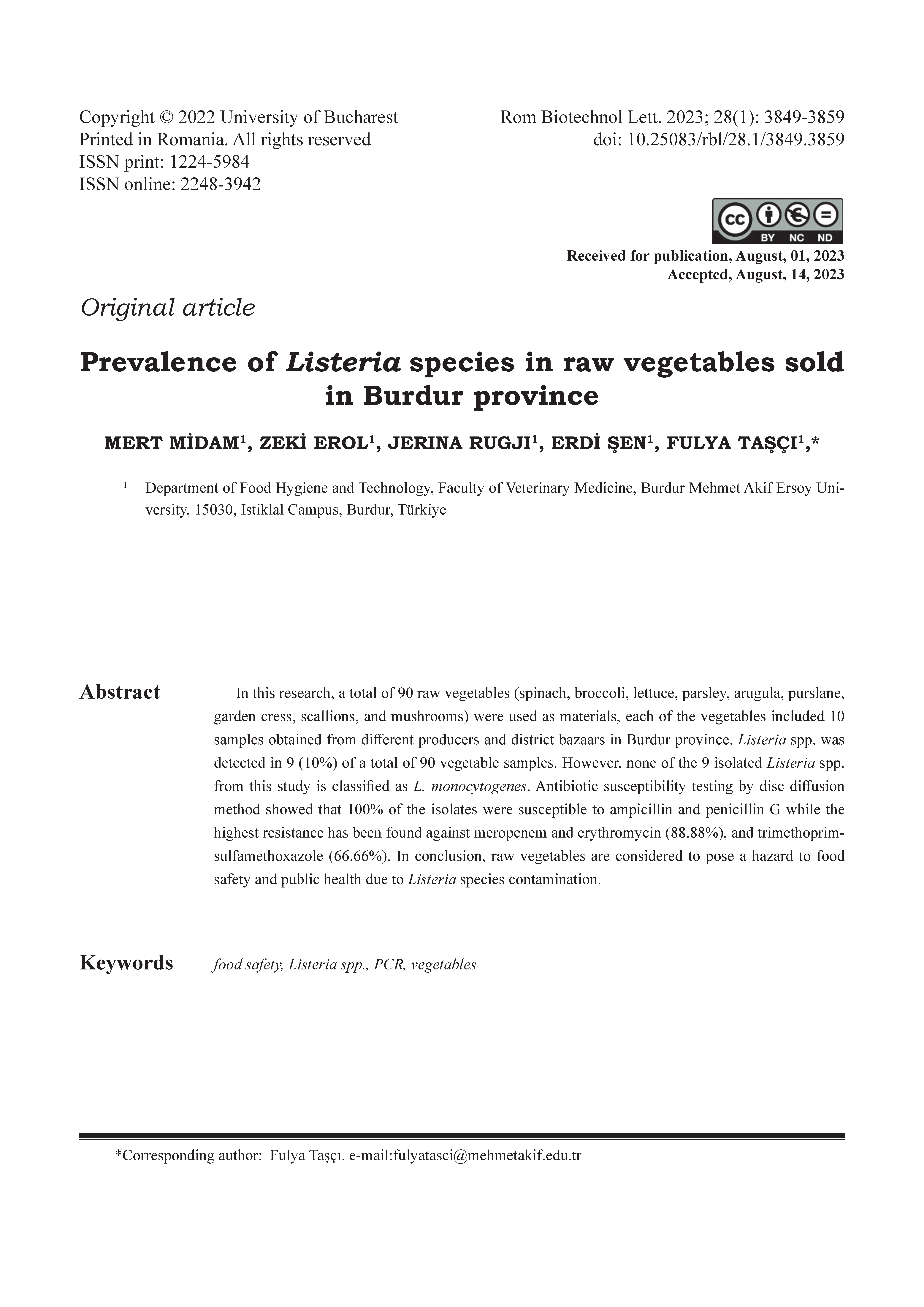Vol. 28 No. 1 (2023): Romanian Biotechnological Letters

The journal is dedicated to publishing original research papers, reviews, rapid and short communications. The covered topics and subjects include biotechnology (i.e., green, red, white, blue, bioinformatics) and interdisciplinary research in medicine, neuroscience, agriculture, animal husbandry, ecology and environmental protection.
Published:
2024-07-01











